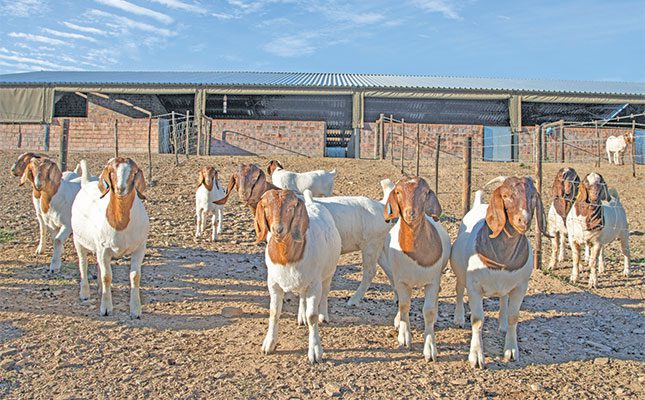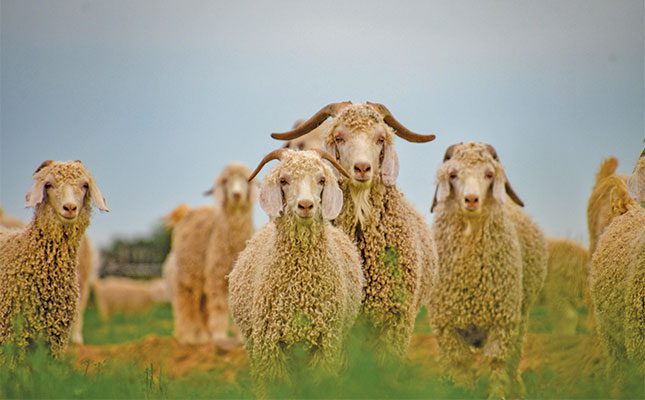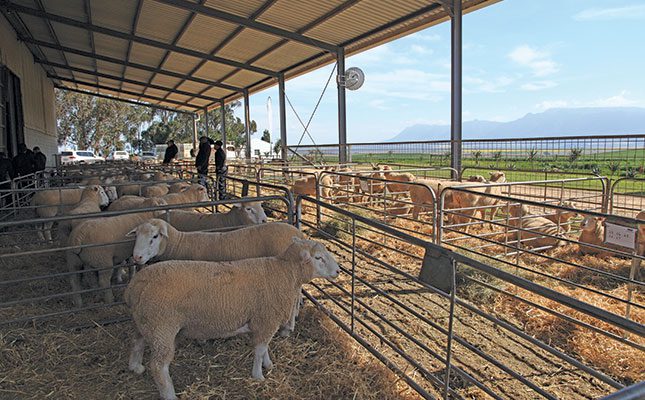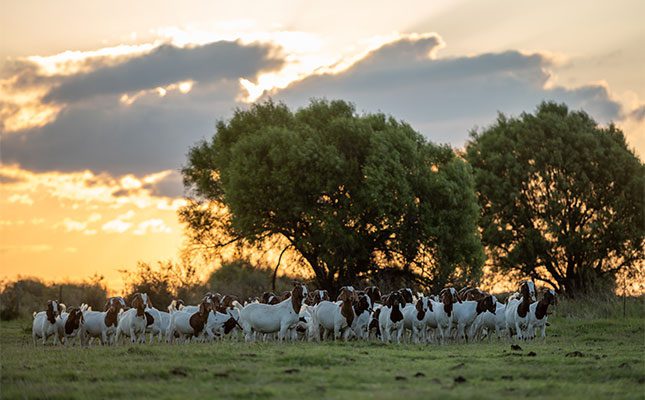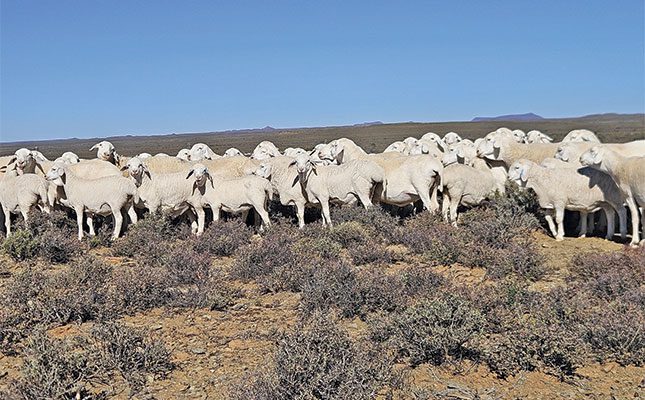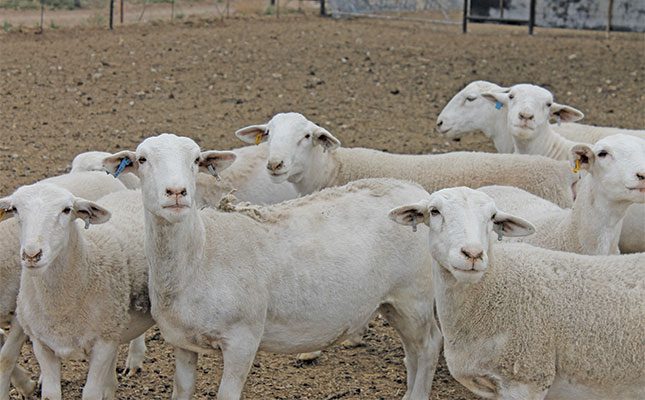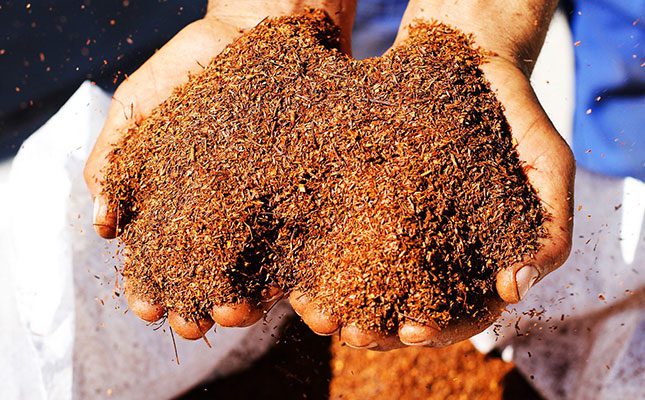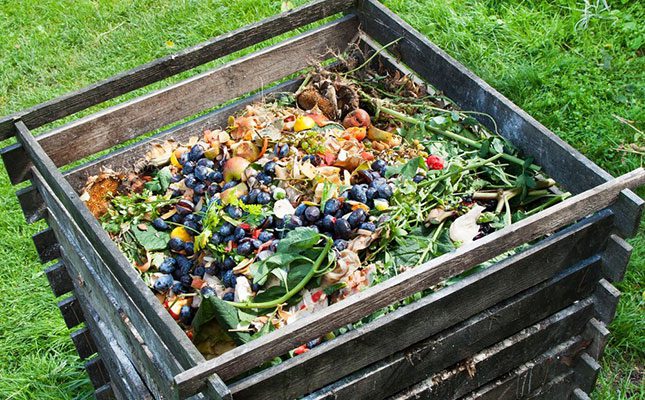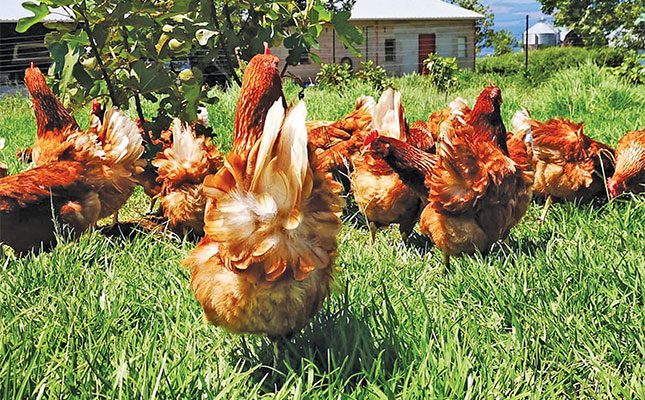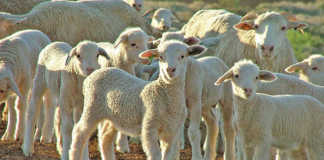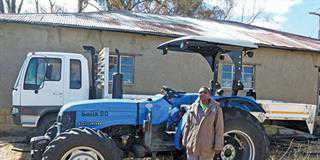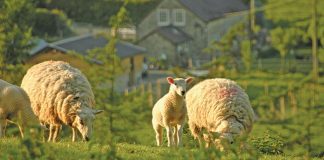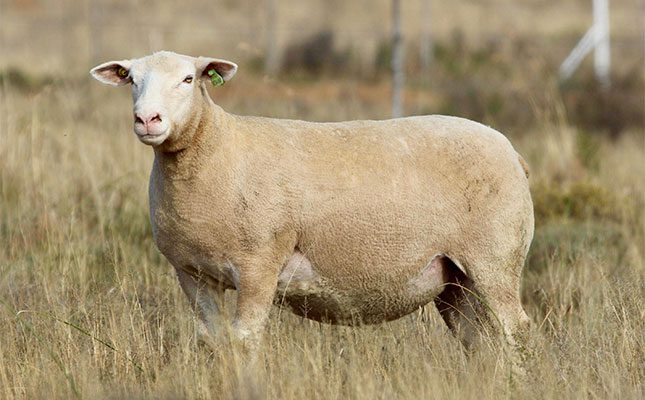
Photo: Dormer Breeders’ Society of South Africa
From 1927, a series of extensive slaughter lamb experiments were carried out at the then Elsenburg Research Station in the Western Cape over a period of nearly two decades.
The researchers wanted to produce suitable rams for crossbreeding purposes, and it was therefore decided to create a white-wool mutton breed, free of kemp and coloured fibres.
The result was the Dormer, originally a cross between Dorset Horns and German Merinos (now known as the South African Mutton Merino), and the breed was officially recognised in 1946.
“The breed was developed to create an early maturing sheep that could produce affordable meat at an early age, would be well adapted to conditions in the winter rainfall area, and could compete with Australian and New Zealand lambs at the Smithfield Market in England,” say Liezel Grobler, secretary of the Dormer Breeders’ Society of South Africa, and Marius Eksteen, head of the society’s marketing portfolio.
The Dormer’s development was also intended to meet the demand for lambs with excellent growth rates, adaptability to various grazing systems, and outstanding meat quality.
Over the decades, the Dormer has grown into one of South Africa’s most respected terminal sire breeds.
How the Dormer was developed
The name ‘Dormer’ is a blend of Dorset and Merino, the two breeds used in its development.
“[At the outset of the breed’s development], extensive breeding trials were conducted at Elsenburg, using various breeds from around the world. To breed a bigger ewe with better mutton conformation, without changing the Merino’s wool characteristics, a German Merino [South African Mutton Merino] ram was used on Merino ewes.
“Lambs from these crossbred ewes, mated with Dorset Horn rams, showed a greater average daily gain than any of the other crossbred lambs,” say Grobler and Eksteen.
The South African Mutton Merino (SAMM) also provided resilience against the lung parasite Muellerius capillaris to which the Dorset Horns were particularly susceptible.
It was found that the Dorset Horn-SAMM crosses were the only crosses to produce a satisfactory lambing percentage in autumn, a particularly crucial trait in the Western Cape, where primarily winter pastures are used to produce lambs.
“On the strength of favourable results achieved with the Elsenburg slaughter lamb experiments and the marketing of carcasses on the Smithfield Market, it was decided to conduct similar experiments on a co-operative basis over the entire winter rainfall area. The purpose was to investigate the possibility of developing a profitable slaughter lamb industry, which would, to a large extent, be aimed at the overseas market.”
In 1936/37, the Council of Control over the Livestock and Meat Industries (the South African Meat Board today) proceeded to import several hundred British mutton-breed rams from Australia and England. A number of the rams were put out on loan for the co-operative slaughter lamb experiments, and they were mainly crossed with Merino ewes.
During 1937 and 1938, more than 6 000 lamb carcasses were shipped to the Smithfield Market as experimental consignments. From these large-scale co-operative experiments, it was confirmed that the Dorset Horn rams were the best producers of slaughter lambs.
“A decision was taken to create a new breed from the cross, but a prerequisite for this was to start off with good breeding material. It was consequently decided not to use the Elsenburg Dorset Horns, which were already showing symptoms of serious lung trouble, but to import good stud rams from Australia.
“On 18 October 1940, 10 Dorset Horn stud rams at the Elsenburg Research Station, purchased with funds made available by the Council for Control over the Livestock and Meat Industries. Following strict selection on conformation and type, only four of these were selected for eventual use.”
The first sale
As far as can be established, the first sale of Dormer rams was held at Elsenburg in 1947 and annually thereafter, except in 1969 when all the sheep were needed for an experiment.
The average selling price at this sale was R15 (approximately R822 today). The price remained relatively low until 1954, when it started to increase.
“The first official Dormer sale to be held away from Elsenburg was at Goodwood [in the Western Cape] on 27 October 1968. Since then, sales are held annually in Bloemfontein [in the Free State] and Goodwood.
“Apart from the Elsenburg flock, Dormers were also bred by private farmers. Through participation in co-operative experiments, farmers and private concerns have participated in the breed’s development since 1937.
“Sheep producers have been upgrading their flocks with Dormer rams bought at the Elsenburg sales since about 1947,” conclude Grobler and Eksteen.

